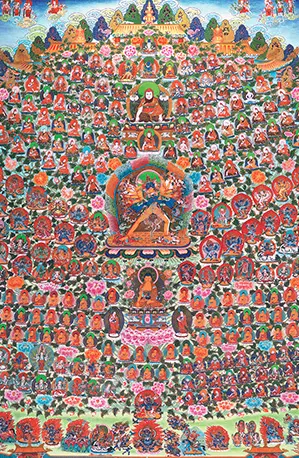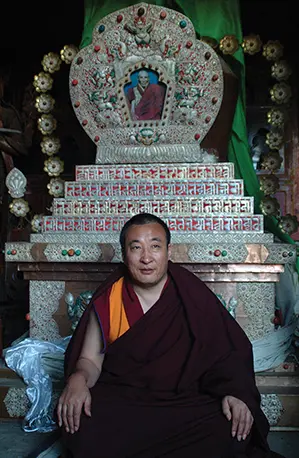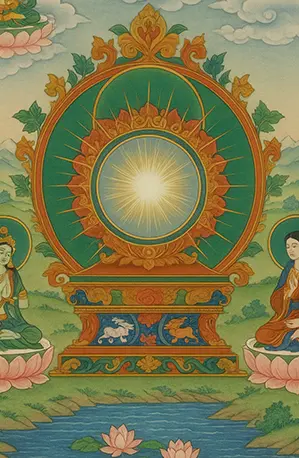Kalachakra Completion
Prepare for the Practices of Kalachakra Completion StagePreparing for the Vajra Yogas
The entrance to the profound path of vajra yoga begins with the direct perception of one’s own enlightened nature. To use this transformative experience as a basis for achieving complete enlightenment, we must establish unwavering confidence in the lineage, teacher and self.
As we set out on our journey to manifest a golden age of peace and harmony in this world, we recognize that the methods we choose will have a direct impact on how quickly we are able to achieve our aim. While there are many methods that we can rely on, the direct and profound path of vajra yoga is particularly powerful in that it is capable of unveiling our most sacred truth in as little as just a few years of intensive practice.
However, this incredibly skilful method is not without its own causes and conditions. In order for us to be able to take full advantage of the unique qualities of this path, we must invest the time to first prepare our body and mind. Only with the correct foundations in place can we be certain that the profound results that we seek will manifest.
Cultivating Confidence
“If you have the willingness to overcome a million or trillion challenges, then you are willing to do that and at least pray for that… to overcome the obstacles then you have a big potential to be successful on the spirital path.”
The Three Confidences
Even though we can divide the preliminary practices up in different ways, the system of cultivating the Three Confidences is perhaps one of the most direct and clear. The Three Confidences is an integral part of of the Jonang practice and this is outlined by Jetsun Tarantha. Develop on the path in cultivating confidence in three stages:
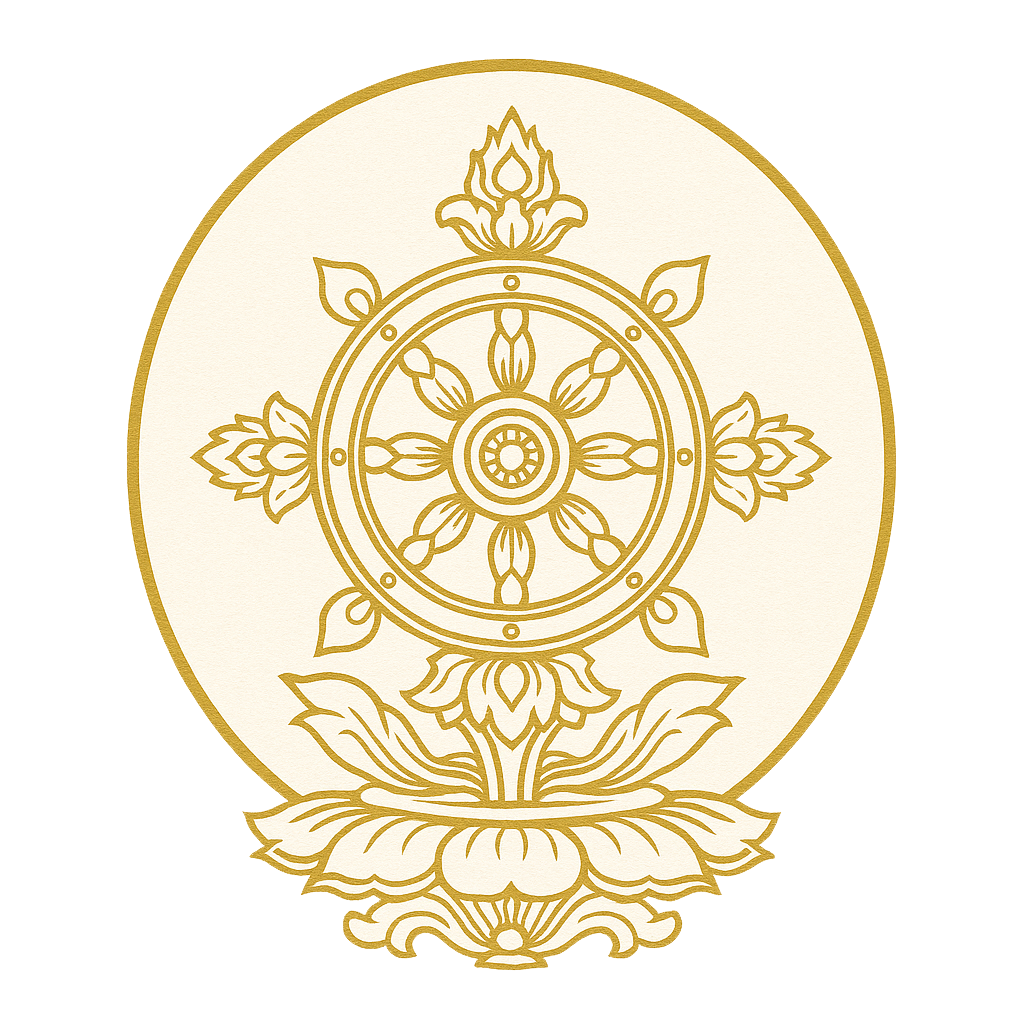
1. Confidence in the Lineage
Establish unwavering faith in the lineage of teachings which can you lead you to complete enlightenment.
2. CONFIDENCE IN THE GURU
Establish unwavering faith in the teacher who transmits the teachings of definitive meaning.
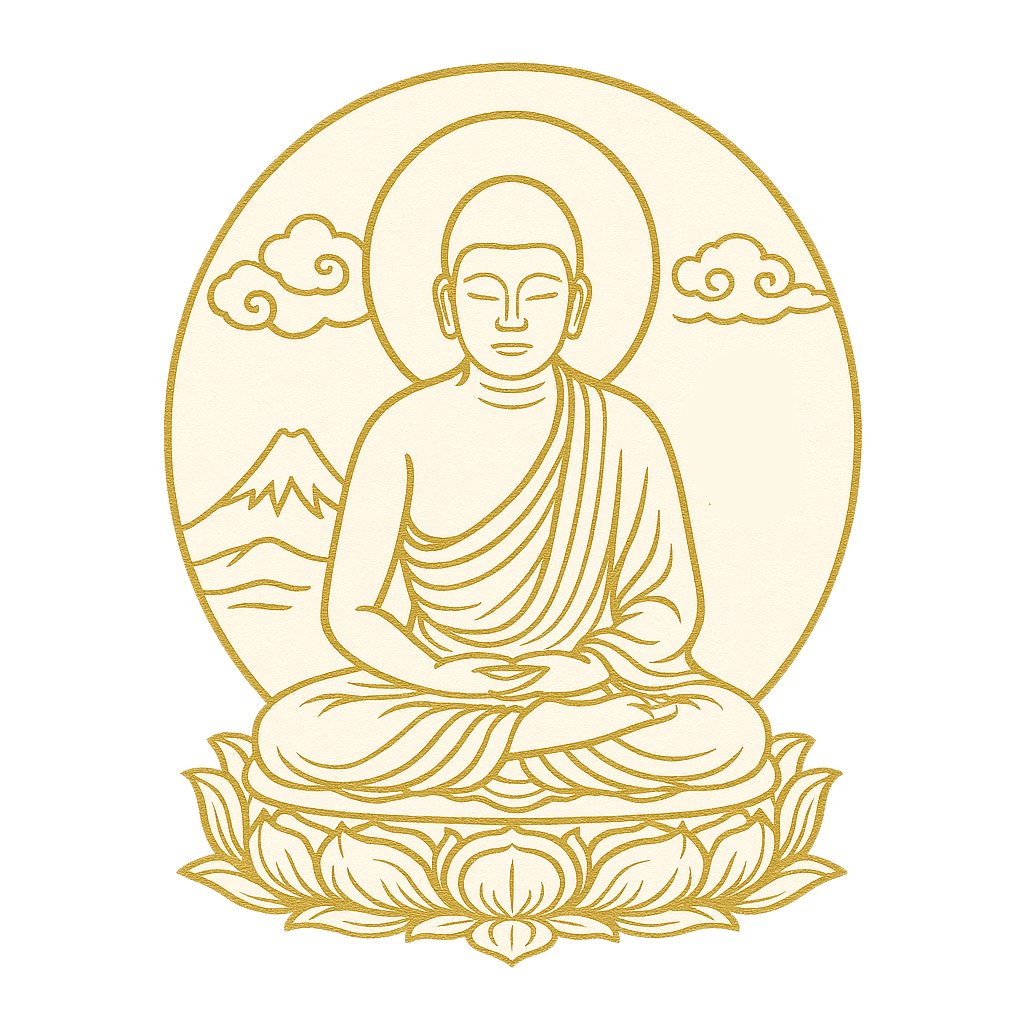
3. CONFIDENCE IN ONESELF
Establish unwavering faith in your own innate capacity to achieve Buddhahood in reliance on these teachings.
Confidence in the Lineage of Teachings
The first stage on the path is to develop a clear and confident understanding of the lineage of teachings we will rely on to realize the ultimate nature of reality. This begins with a crucial question: Can these teachings truly produce the result I seek? If a path is incomplete, it may help us progress but ultimately fall short of delivering full realization. That’s why we must take the time to thoroughly investigate the methods we encounter—studying, reflecting, and meditating to understand their true potential.
In doing so, we learn to distinguish between provisional teachings and those that are definitive—those that directly point to primordial wisdom and aim to transcend dualistic consciousness. Until we reach such teachings, we should treat all others as stepping stones along the way.
By cultivating discriminating wisdom, we gain the ability to assess each teaching’s benefits and limitations in relation to our karmic conditions. This clarity gives rise to deep confidence in our path, knowing precisely why we follow it and how it leads to our goal. With this unwavering trust, the mind can finally rest—free from confusion and afflicted doubt.
Confidence in the Guru of the Lineage
During the process of developing our confidence in the lineage of teachings, we will likely encounter many teachers. The information that they express may come in different forms such as texts, oral instructions and so forth. In the beginning, the role of our teachers is to help us understand what is primary and what is secondary. They introduce us to phenomena that we need to focus on and provide us with guidance in how to use those phenomena to transform our experience.
With time, we will develop clarity regarding the teachings and our confidence in the lineage will become strong. This connection is not based on blind devotion, but on careful discernment—we have examined the guru’s qualities, verified their qualifications, and determined that they are a trustworthy vessel of the authentic lineage. We trust not only in their realization but also in their capacity to guide us in accordance with the profound view and methods of the path. When this happens, the mind and heart naturally opens and becomes ready to deepen its relationship with the teacher through which that lineage flows. This is a natural process that does not require you to “choose your teacher”. You will know in your heart if this is your root guru. Instead, while we learn to cherish all of our teachers for their kindness, we also recognise that some teachers are more capable of unlocking the definitive meaning of the teachings for our individual minds. Such teachers are the most precious and we should cultivate our relationship with them as much as we can.
While we may still face challenges and discomfort along the way, our faith gives us the strength to persevere. We understand that true transformation is not always smooth, but we are confident that the guru’s instructions—however confronting or demanding—are given for our ultimate benefit. With this faith, we can surrender the resistance of doubt and step forward with courage and openness.
We deepen this connection by aligning our own priorities with those of our guru. Rather than viewing them simply as a source of teachings, we engage with gratitude—offering our time, skills, and resources to support their vision. In doing so, we serve not only the guru, but also the broader community of students walking this path.
This relationship forms a powerful support network that holds and uplifts us as our practice moves into increasingly subtle dimensions. With faith in our guru and confidence in the path, our minds can rest in certainty, knowing we are guided, supported, and never alone—no matter what arises.
Confidence in One’s Self
Having established unwavering confidence in the lineage and the teacher, the next step is to establish confidence in our own capacity to achieve the goals we seek. All too often, while we may be able to see that others have achieved realisation, we still lack the confidence that we can do it ourselves. We doubt that we have the strength of determination needed, that we have the necessary conditions for success or that we even possess the capacity to do so. To overcome these perceived limitations we need to engage in practices that will reveal to us what has always been there—our innately pure nature. We need to see that the ideas that are expressed in our lineage by our teacher are in fact verifiable in our own experience. This is a process, where each step reveals more and more of our essence and this gives us increasing degrees of confidence which spur us forward into deeper and deeper states of experience. Having previously studied the structure and methodology of the path in the first stage of this process, we will have identified two sets of practices—the preliminaries and the main practices. In our case, the main practices are referred to as the vajra yogas. These are a collection of practices which focus on the initial realization of primordial wisdom and then the refinement of that realization until buddhahood is reached. The preliminary practices are a collection of practices which are designed to bring one from one’s present state of consciousness to a non-conceptual state in which primordial wisdom can arise. The set of preliminary practices most suitable for a particular practitioner will depend entirely upon the mind of the practitioner and which ones are most suited to clearing away the specific blockages which prevent that practitioner from releasing their conceptual grasp on dualistic reality. Regardless of the preliminaries used, if a practitioner is able to learn to abide in a completely non-conceptual awareness, then they will have achieved what is known as “confidence in one’s self.” This specific mind knows clearly what is reality and what is illusion, therefore there is no doubt in who the true self is. This confidence is the necessary foundation for then engaging in the main practices of the vajra yogas.
DZOKDEN KALAPA
Vajra Yoga Completion Stage Program
Advance on the Kalachakra Path with Authentic Completion Stage Practice
Khentrul Rinpoche is offering a rare opportunity for qualified practitioners to engage in the Kalachakra Completion Stage practices—profound yogic methods traditionally preserved by the Jonang lineage. While millions worldwide have received the Kalachakra empowerment from His Holiness the Dalai Lama, the actual completion stage practices have remained largely inaccessible outside of Jonang monasteries in modern-day China.
Now, for the first time, serious monastic and non-monastic practitioners around the world can receive these teachings directly from a Jonang Kalachakra master. This is not modern yoga—it is a secret tantric path requiring deep faith, devotion, and unwavering confidence in yourself, your teacher, and the practice.
If you feel called to fully commit to the path of Kalachakra, explore the program and see if you’re ready for the next stage.
Secrecy and Preserving the Lineage
At Dzokden, the practice of the Vajra Yogas is held with the utmost reverence and discretion, in accordance with the direct instruction of His Holiness Jigme Dorje, the head of the Jonang lineage. He declared that these profound completion stage practices must remain secret, even when taught in the West. Unlike other lineages where the sanctity of secrecy has diminished—leading to the dilution of their potency and the reduction of profound practices into mere techniques—the Jonang tradition preserves the sacredness of these teachings. This secrecy is not rooted in exclusion, but in protection: it safeguards the deep blessings of the Guru and ensures that realization arises not from intellectual grasping, but from ripened merit and devotion.
Students who enter the path of the Jonang Vajra Yogas at Dzokden vow to uphold this sacred commitment. These teachings are not to be recorded, published, or casually discussed—not even with other Vajra Masters. The completion stage is the heart of our lineage’s realization, and its transmission requires a container of deep respect and purity. Those who walk this path must hold the pith instructions in silence, guarding them as precious jewels to be realized through experience, not exposed to the winds of conceptual discourse.

Proclamation of the Dissemination of the Pith Instructions
What is clearly taught in many sutras and tantras was expounded by the Omniscient One Possessing the Four Reliances, Dolpopa Sherab Gyaltsen, as the profound dharma of the hermits whose minds are devoid of the eight mundane concerns, just like a symphony of cymbals, in the treatise entitled ‘The Mountain Doctrine, Ocean of Definitive Meaning’, which first proclaimed the fearless lion’s roar in the retreats of the snowy mountains of Tibet, the view that unifies the definitive meaning which is the intention of the Third Turning of the Wheel of Dharma and the profound, secret Kalachakra, the King of the Unsurpassable, Secret Tantras.
Accordingly, with regards to all the profound and extraordinary teachings of the Glorious Gyalwa Jonangpa, if one practices the proper stages of the gradual preliminaries by applying the three confidences and the four disregards, one will reach without any obstructions the superior state of accomplishment of unmistaken omniscience. Therefore, the Glorious Gyalwa Jonangpa are the genuine holders of the teachings of this practice lineage and have never sought mundane prestige or political prominence.
Moreover, if all of these extraordinary and profound teachings are commodified, it won’t be possible to experience the power of their blessings. Therefore, they are bestowed only on disciples who are worthy vessels for the powerful content of the pith instructions, and then, the commitments between lama and disciples are guarded as one protects one’s own life.
If one respects the secrecy of the profound meaning and takes good care of the commitments, one will certainly be able to be freed through realization and to swiftly progress on the bhumis and paths. This is not a mere belief. Rather, it is a doctrinal transmission of competent practitioners who kept record of their experiences. Therefore, since rules for spreading the profound dharma in the future are seen as having the utmost importance, the highest teaching of the Vajra Yoga, which is the profound path of the excellent lineage from the northern land of Shambhala must be preserved accordingly.
As for the Six Branched Yoga, the Completion Stage of the Kalachakra Tantra, qualified Vajra Masters of the Victorious Jonangpa must gradually lead their respective heart disciples through the common and uncommon preliminaries.
For the sake of those who have practiced according to the instructions and who have gradually completed the proper progression, the methods for practicing the pith instructions of the Six Branched Yoga and the associated techniques for removing the obstacles will be translated into their respective languages and then taught. Otherwise, if, recklessly translating all the pith instructions and the associated methods for practicing, we sell them in the market and so on, we don’t know whether this will bring benefit or harm. Thus, anything concerning the pith instructions that have an order-seal of secrecy should never be commodified.
Apart from the holders of the teachings of the Victorious Jonangpa, who possess the rights of ownership of these instructions, there are no other individuals nor organizations that have such rights. Therefore, the entire Victorious Jonangpa has decreed that, without the permission of the Lord of the teachings of the Victorious Jonangpa, it is not possible to commercialize this material as one wishes.
Making this appeal to everyone in the world, we sincerely request that everyone respects and honors this important matter.
Written at the Dharma Palace of the Great Eastern Monastery of Dzamthang Tsangwa by the 47th Vajra Throne Holder Tsangwa Geitrul, Supreme Incarnation Jigme Dorje on the 15th day of the third month of the fire bird year during the 17th rabjung (May 10, 2017), on the very auspicious anniversary of the teaching of the root tantra of the Glorious Kalachakra.

His Holiness Jigme Dorje Rinpoche head of Jonang Lineage and Abbott of Dzamthang’s Endorsement of Khentrul Rinpoche
Shar Khentrul Jamphel Lodrö has attained great faith in the teachings of Tibetan Buddhism through his intensive study of the five main traditions of Nyingma, Sakya, Kagyu, Jonang and Geluk. On the basis of these teachings, he has written many great books on subjects such as the history of the Dharma and non-sectarian philosophical views. Through this work he has brought great benefit to the doctrine.
While having studied under many great masters from each of the traditions, his root master was the truly learned and accomplished master Jetsun Lama Lobsang Trinle, also known as Lama Trinle Tsang. From him, he spent a long time learning the complete teachings of Sutra and Tantra, specifically, the six branch practices of the Kalachakra Completion Stage. In recognition of his great effort to achieve mastery of all traditions, Jamphel Lodrö was awarded the title of Rimé Master by his root teacher. In particular, he was given the highly blessed Khenpo-hat which had been worn by Lama Lobsang Trinlé throughout that master’s life. This hat carries with it profound blessings and is a sign that Jamphel Lodrö will bring great welfare to beings in the future.
As a child, Jamphel Lodrö was recognised as the immediate reincarnation of the Golok lama Getse Khentrul; however, this truth was kept secret in order to expel obstacles to his life. Many years later, with permission from his root master and after all obstacles had been dispelled, the seal was lifted and he was publicly recognised as the second incarnation of the Washul Lhazu Lama—Ngawang Chözin Gyatso.
Presently, he has been giving extensive teachings on the sutras of definitive meaning and the profound philosophical views of Zhentong Madhyamaka, as well as the preliminary practices which form the foundation for the practice of Kalachakra. He has made great effort to make these teachings available in the Tibetan and English languages, with the aim to eventually translate them into many other languages in the future. Due to his determination to make the Zhentong philosophy accessible, many people all over this world have received great benefit and for that I am very grateful. I rejoice and thank him on behalf of all Jonang practitioners, and fully support him in his many activities.
I would particularly like to express my highest regard for his courage to take responsibility for the most rare and profound teachings of the Kalachakra as an authentic holder of the lineage, as well as for his emphasis for all traditions to come together in the name of global peace and harmony. From the bottom of my heart, I rejoice in these great deeds for they are truly the causes for a golden age to arise.
To all those who are currently supporting Khentrul Rinpoche to achieve these activities, I would like to express my heartfelt thanks to you and rejoice in the vast merit that you are creating. It is most rare to have the opportunity to encounter these teachings which can bring so much peace and harmony to this world. I make prayers and aspirations that in the future, we will all gather together in the sublime northern realm of Shambhala.
Written at the Dharma palace of the Great Eastern Monastery of Dzamthang Tsangwa by the 47th Vajra Throne Holder Tsangwa Geitrul, Supreme Incarnation Jigme Dorje on the sixth month of the fire monkey year during the 17th rabjung (August, 2016).
